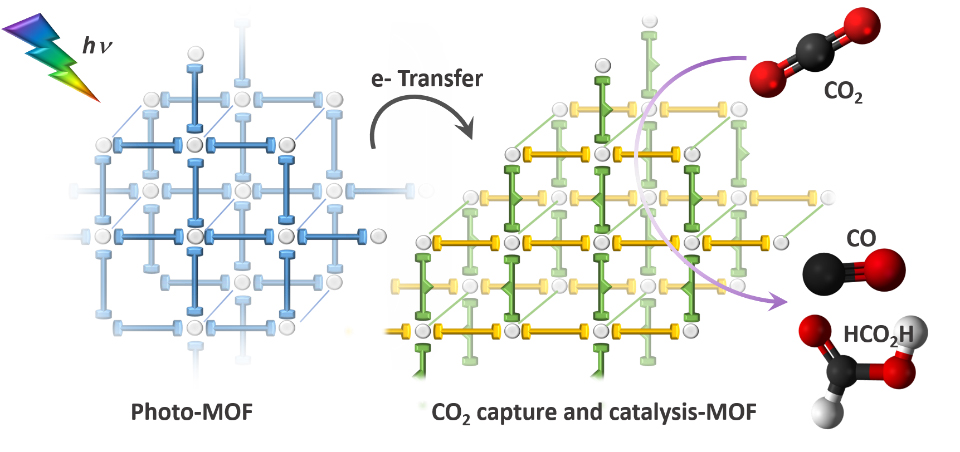Innovative Approaches in CO2 Capture and Conversion via Photoactive MOFs
In an era where climate change poses a significant challenge to our world, innovative solutions to mitigate carbon dioxide (CO2) emissions are an urgent imperative. This YIN award project aims at creating functional materials capable of adsorbing CO2 from various gaseous mixtures and catalyzing its chemical reduction upon light absorption. This approach innovatively combines CO2 capture with its conversion into valuable chemicals using renewable energy sources like visible light, thus closing the carbon cycle. The collaboration between Dr. Claudia Bizzarri and PD Dr. Manuel Tsotsalas was born out of a mutual recognition of the potential to harness each other’s strengths for a common goal: tackling the CO2 challenge.
Claudia Bizzarri, leading an independent junior research group, brings a wealth of knowledge in the design of sustainable, photoactive metal complexes. Meanwhile, Manuel Tsotsalas, at the helm of a Helmholtz Young Investigator Group, contributes his extensive experience in designing and synthesizing porous materials, including Metal-Organic Frameworks (MOFs).
By pushing the boundaries of material science and chemistry, the project highlights the immense potential of collaborative research in developing sustainable solutions for our planet. As the project continues to evolve, it can lead to groundbreaking advancements in environmental stewardship. Among the key highlights so far is the development of new MOFs. By integrating various polar functional groups, the project team has successfully created MOFs with enhanced CO2 affinity including amine groups, known for their strong interaction with CO2.
Moreover, the project has broken new ground by synthesizing MOFs based on accessible, earth-abundant metals like copper and iron, marking a shift away from reliance on noble metals. In particular, new building-blocks based on diimines, which are able to coordinate several metals, are now available. The isolated metal-based complexes have been investigated by means of UV-vis absorption and electrochemistry to dive into their photoredox properties and select the most promising candidates to build novel MOFs for photocatalytic CO2 reduction.
One of the project’s most significant milestones is the establishment of a test station for CO2 capture. Additionally, the successful synthesis of MOFs based on earth-abundant metals stands as a testament to the project’s innovative approach. The team’s efforts have already begun to bear fruit, with a student from Bizzarri’s group winning a poster award at the "V Autumn Meeting of the Polish Photochemistry Group" in Cracow.
The collaboration between Claudia Bizzarri and ManuelTsotsalas continues to thrive. The project has laid a strong foundation for a future proposal, bolstering its chances with these initial findings.

